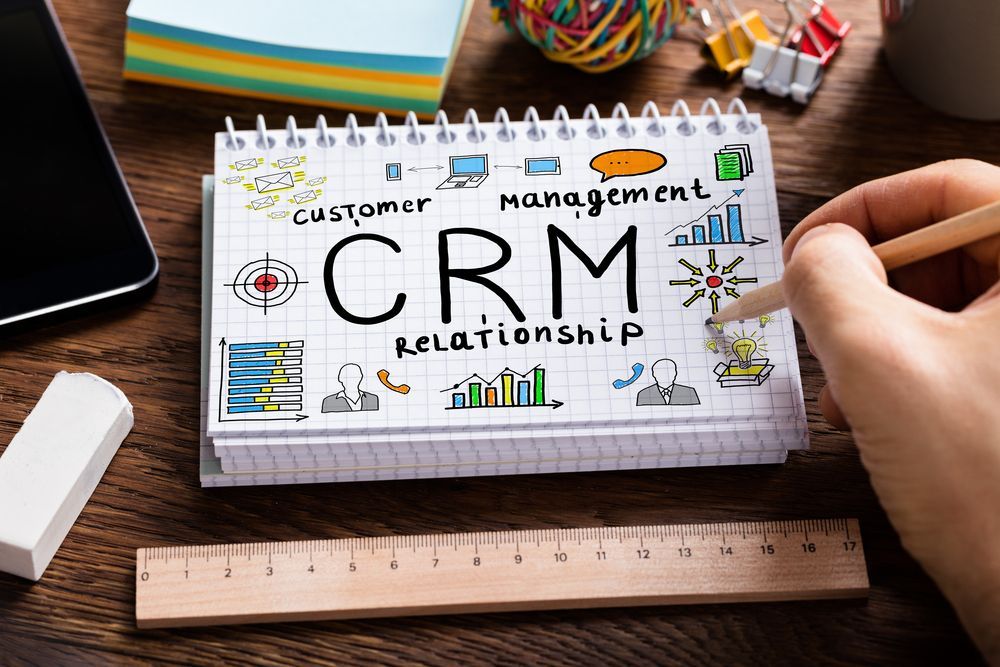How to build a business case for CRM
How to build a business case for CRM
& Business Process Optimization
Introduction:
Every business has areas of inefficiency, lost revenue opportunities, or customer service challenges that hinder growth. Identifying these "pain points" is the first step toward creating solutions that reduce costs, improve efficiency, and drive profitability. However, the process of analyzing pain points is more than just solving problems—it’s the foundation for prioritizing initiatives, defining clear solution requirements, and building a solid business case with measurable ROI.
WHY THIS EXERCISE IS ESSENTIAL
Setting Priorities for Success
Businesses face a multitude of challenges, but not all problems are created equal. Some pain points may have a minimal financial impact, while others represent major inefficiencies or revenue losses. Conducting a thorough analysis allows you to:
- Rank issues by impact: Focus on the pain points that deliver the greatest financial or operational gains.
- Allocate resources strategically: Avoid wasting time and money on low-priority problems.
- Unite stakeholders: Align teams around shared goals, ensuring everyone understands what’s most critical.
Defining Solution Requirements
Once pain points are identified, this exercise helps translate them into actionable requirements for solutions. For example:
- If sales leads are slipping through the cracks, the requirement might be a centralized CRM with lead tracking, scoring, and automated follow-ups.
- If quoting is manual and error-prone, the requirement could include an automated quoting tool integrated with real-time inventory and pricing data.
By understanding the nature and scope of each pain point, you can create detailed requirements that ensure the solution directly addresses your challenges.
Creating Key Figures for ROI and Business Case
The insights gathered during this exercise are the foundation for building a compelling ROI calculation and business case. For example:
- Quantify the impact: Use real data to estimate financial savings, gross profit gains, or efficiency improvements for each pain point.
- Project ROI: Compare the potential savings or gains with the estimated cost of implementing a solution.
- Build confidence: Provide the board or decision-makers with clear, data-backed figures to justify the investment.
HOW TO DISCOVER PAIN POINTS
Engage Key Stakeholders
Invite input from all relevant departments—sales, marketing, customer support, operations, etc. Each team will have unique perspectives on the challenges they face.
Analyze Processes and Data
- Look for bottlenecks: Identify areas where workflows are slow, repetitive, or error-prone.
- Review metrics: Examine conversion rates, customer satisfaction scores, lead response times, and other KPIs for underperformance.
Ask the Right Questions
- What tasks consume the most time and resources?
- Where are errors most frequent, and what do they cost the business?
- Which challenges create the most frustration for employees or customers?

DETERMINING COSTS & SAVINGS
Financial Impact
For each pain point, calculate the direct monetary costs. Examples include:
- Revenue lost from missed deals due to slow lead response times.
- Costs associated with errors, such as incorrect quotes or returns.
- Extra labor expenses caused by inefficient manual processes.
Operational and Efficiency Impact
Quantify the non-financial costs, such as:
- Wasted time spent on repetitive or redundant tasks.
- Delays in customer service response times.
- Low employee productivity due to disorganized workflows.
Build Assumptions for ROI Calculations
Use realistic assumptions to project the savings or profit gains that could result from resolving each issue. For example:
- If implementing a CRM reduces lead response time by 50%, how many additional deals might you close?
- If automating quoting saves 30 minutes per quote, how much labor could be redirected to revenue-generating activities?
USE THE FREE ROI PAIN POINTS TEMPLATE TO DOCUMENT & PRIORITIZE REQUIREMENTS
Evaluate ROI and Confidence Levels
For each pain point, assign:
- ROI Impact: How significant are the savings or gains relative to the effort and cost of the solution?
- Confidence Level: How certain are you that the savings/gains can be achieved?
Identify Critical vs. Nice-to-Have Solutions
Focus on items with the highest ROI and confidence levels first. For example:
- A pain point costing $100,000 annually with a high confidence level in achieving a solution should take precedence over a $10,000 issue with low confidence.
Prepare for Solution Design
The completed template provides a clear roadmap for defining solution requirements. High-priority pain points can be translated into specific functionalities and workflows for tools like CRM, inventory management, or customer support systems.
BUILDING THE BUSINESS CASE
Step 1: Consolidate Key Findings
Summarize the financial and operational impacts of the top pain points. Highlight the total potential savings or gross profit gains.
Step 2: Compare Costs vs. Benefits
Estimate the investment required for the solution (e.g., licensing, implementation, training) and compare it to the projected savings. Estimating these at a loose level will provide a wide range of estimated costs.
If you want more accurate figures here, this is not a simple step. Detailed requirements are required along with a solution design incorporating an understanding of what requirements are met with standard software capabilities, and what requirements demand customization, and the complexity and effort associated with meeting requirements.
Step 3: Present a Clear ROI
Use the data to create a compelling argument. For example:
- If automating lead tracking and follow-ups costs $20,000 but generates $200,000 in savings, the ROI is 10x the investment.
Step 4: Address Risks
Acknowledge potential risks (e.g., resistance to change, data migration challenges) and outline mitigation strategies.
EXAMPLE ROI CASE STUDIES:
Transforming your business with a CRM/business process automation solution
Below are a couple of case study examples that show the kind of Return On Investment that companies are realizing with a well implemented CRM or business process automation solutions.
Zoomcar is the leading marketplace for car sharing in emerging markets, with over 20,000 cars on its technology-driven platform across India, Southeast Asia, and the MENA region.
After employing Zoho CRM, Zoomcar has observed a 150% increase in conversion rates, which is directly proportionate to the company's revenue. Bhama notes that the benefits the company has gained represent four times the amount spent on Zoho's product. Among those benefits, 60% amounts to direct, and 40% to indirect benefits, which includes streamlining various internal processes and minimizing human resources.
Display Science Case Study & ROI
A Singapore based company that provides transit/taxi advertising grew 500% in 5 years.
Founder Tony George says, "We haven't explored even 50% of Zoho CRM's functionalities yet, but we feel we have already achieved what we wanted to."
Nucleus Research - Average ROI for CRM is 871%
Specialist research company Nucleus Research conducted a study of published ROI case studies on CRM deployments and found that, on average, for every dollar a company spent on CRM it got back $8.71. See the full article here.
Conclusion: Unlock the Full Potential of Your Business
Identifying and addressing business pain points is more than a problem-solving exercise—it’s the foundation for strategic growth. By prioritizing challenges, defining clear solution requirements, and projecting ROI, you can transform inefficiencies into opportunities for profit, efficiency, and customer satisfaction. Use the provided template to take the first step toward a more efficient and profitable business.
Feel free to contact us for obligation-free assistance in understanding and identifying your business's pain points, determining potential solutions, and calculating the ROI to help you make informed decisions for growth.












